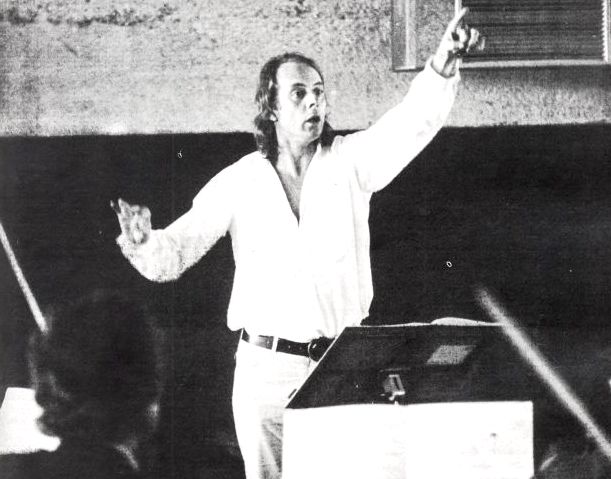Sonntag aus Licht was programmed for the first time in France in its entirety at the Philharmonie de Paris on November 16, 17 and 20. These performances were part of Le Balcon's long-term project to present all seven operas in the cycle in Paris. Sonntag aus Licht was the fifth to be presented. Doubtless because of its length - five hours of music (not counting intermissions) - the work was divided into two evenings, one devoted to the first two scenes in the Cité de la Musique auditorium, the other to the last three in the Philharmonie's Grande Salle Pierre Boulez. Both parts were reviewed by two authors, Lambert Dousson for the first, Bastien Gallet for the second.
Scenes 1 and 2
When Stockhausen's Sonntag aus Licht was first performed in Cologne in April 2011, audiences were offered the choice of attending the opera in two ways: either in its entirety over the course of a single long evening, or in two parts, the first evening devoted to the first two scenes, the second to the following three scenes. There must have been excellent reasons why the programmers of the French premiere decided not to give the Parisian audience this choice, forcing them to watch Sonntag in two parts, deprived of the right to experience what it's like to immerse oneself in Stockhausen's last opera, which lasts almost five hours. We don't need to imagine how Wagner afficionados would have reacted if the same fate had befallen the similarly long Twilight of the Gods or Parsifal, but the fact remains that such an option - or lack of option - is not without effect on the type of artistic experience it engenders, while at the same time exposing the problematic nature of Licht's unity.
This unity, as we know, is founded on the "super-formula", each of the scenes making up the heptalogy being built entirely from a fragment of the latter, for which it provides the temporal coordinates and the melodic, harmonic and rhythmic material... This explains why Licht is frequently presented as the longest opera in the history of music: 28 hours divided into seven days... However, Stockhausen never intended his seven operas to be performed in one go; rather, he dreamed of a park containing seven auditoriums enabling them to be performed simultaneously and continuously. But also, and above all, each scene of each day is conceived as an autonomous work, composed and created sometimes several years apart from the others, following commissions by instrumental ensembles of distinct numbers, to form a composite opera.
With this in mind, it's up to programmers to decide between two types of experience (or to ensure that the audience has a choice between the two). The first is to listen to Sonntag's spirit, and to propose an experience in the truest sense of the word, that of a mystical ritual, unfolding slowly in time and space, in a continuous manner. Going through these five hours of music would undoubtedly be a physical ordeal for both performers and listeners, from which all would emerge exhausted: as tired as someone who has just completed a rite of passage. All this undoubtedly calls for some reflection on the "mise en espace" of this music, and it is possible that elaborating it "according to Karlheinz Stockhausen 's indications", as indicated in the program notice, would not be enough, since it would be tantamount to confusing fidelity with literality.
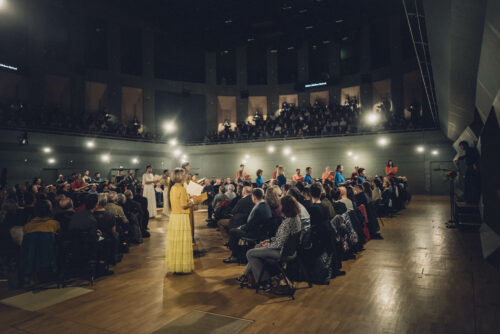
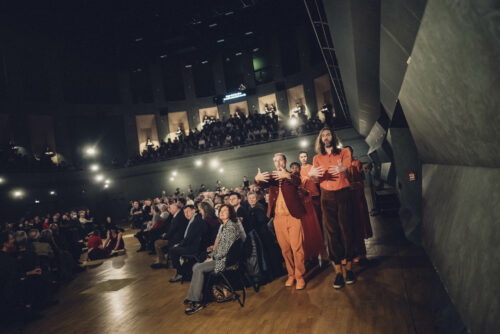
Sonntag 's music is indeed a rite. There are all these movements accomplished by the musicians, and above all this sensation of eternity, embodied in these quasi-immobile drones, on the synthesizer (Haga Ratovo, scene 1, Lichter-Wasser - Sonntag Gruss) or in the choir encircling the audience (Stella Maris choir, scene 2, Engel-Prozessionen), with their suspended harmonies cradled by waves of sound animated by a kind of periodicity, like that of the revolution of the planets, or the stages of the angels' procession. In this way, Stockhausen achieves the prodigious feat of folding time in on itself, so that once the fifty minutes of Lichter-Wasser and the forty of Engel-Prozessionen have ended, we say to ourselves: what, it's already over?
The second type of experience consists in placing Sonntag within the paradigm of the musical work with beginning, end and applause. The performance of Scenes 1 and 2 at the Cité de la Musique was unquestionably not a ritual experience, but a work-experience paradigm. Hence the feeling of having remained at a distance when we would have liked to have been carried away. Hence, too, the feeling of an incomplete experience. The particularly minimal staging undoubtedly contributed to this impression of detachment: devoid of atmosphere, the performance showed a communion between musicians - in the image of the extraordinary final bars of Engel-Prozessionen - but one that was more a matter of attending than participating. In this context, it was difficult to let oneself be bewitched by a libretto composed of names of planets, gods and symbols... Hence, finally, the unpleasant impression of being a spectator of a performance taking place at a distance, rather than experiencing a ceremony celebrating mystical love. It's true that, while tenor Hubert Mayeris a sober and generous Michael, soprano Michiko Takahashi plays an absolutely radiant Eve, who rides Stockhausen's vocal rollercoaster with jubilant ease, her high notes wonderfully controlled. Together, they compose a magnificent duet in Lichter-Wasser - Sonntag Gruss, whose opening bars are captivating in their beauty. As for the musicians and singers of Le Balcon, and conductor Maxime Pascal himself, there is no doubting their virtuosity, commitment and enthusiasm in serving such great music.
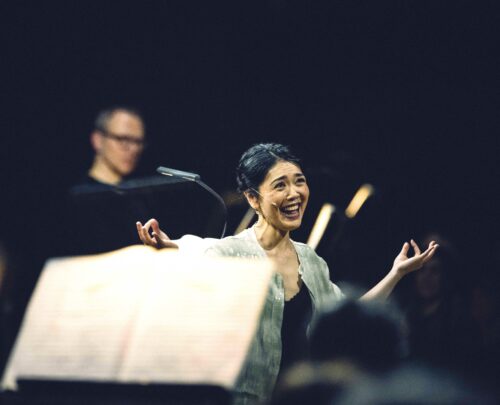
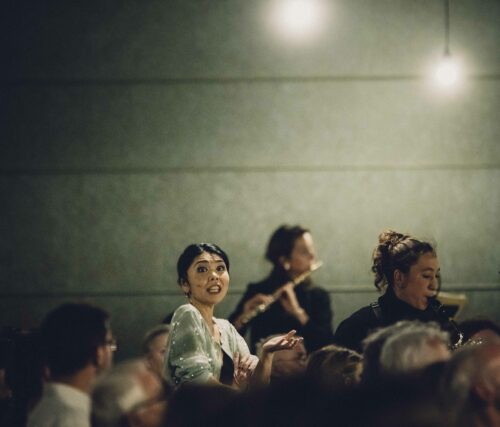
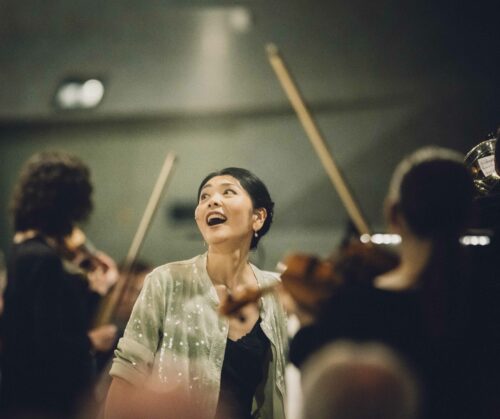
Scenes 3, 4 and 5
Sonntag au Licht is the opera of union - between Eve and Michael, water and light, heart and ring, green and blue, and so on. - but it is also the recapitulation of what has gone before, of the other six days and operas, and all the things, beings, motifs and symbols they convey. So there's a lot to enumerate. The libretto is an almost uninterrupted series of lists, which in themselves express Licht 's ambition: to embrace everything, from the tiniest - the flower, the pebble, the bird - to the most vast - God. Which makes Sonntag a very undramatic opera. After the ups and downs of the first six days, Dimanche is the moment when we look back on the path we've travelled, when the disparate and the heterogeneous are enunciated and entwined to make a world. If Mittwoch (Wednesday) is the day when beings assemble (and the three figures of the cycle join forces), Sonntag is the day when all creation unites to give thanks to God and celebrate the union of Eve and Michael. We name, we pray, we praise and we embrace (to the point of mystical fusion). That's pretty much the opera's entire program.
The challenge is not to tell the story, but to make spectators experience this process - repeated in every scene - of praise-union, naming-fusion and superimposition-interlacing. In fact, it's entirely possible to listen to (and experience) this process without adhering to the ceremonial character of certain scenes, and without placing any value on the symbols (and powers) enunciated.
It's important, however, that the staging matches the music's message - in other words, that it doesn't simply illustrate or repeat what the opera has already made clear. Unfortunately, this is what the audience of Sonntag aus Licht were offered. The two directors - Ted Huffman and Maxime Pascal (who also conducted the music) - preferred the expression "mise en espace", no doubt because the set design was limited to a large screen above the stage (scenes 3-5) and the costumes, with the exception of the soloists in scene 4, were relatively simple (and on the whole quite successful, especially those of the male and female musicians, which were white and deliberately arranged). The problem is that this apparent lack of choice accentuates the already tedious literalness of the libretto by dint of redundancy: the tenor sings "volcano" and we see both the word and the image on the screen, the tenor sings "eagle", the tenor sings "iris", and so on. - You could hear a parody of Joseph Kosuth(One and Three Chairs, 1965) if the purpose weren't so obviously didactic. They want to explain things to us, but we'd much rather be gripped and carried away (we are, after all, a little, especially in scene 5, where the "mise en espace" becomes less visible). Licht needs mystery, not remedial teaching.
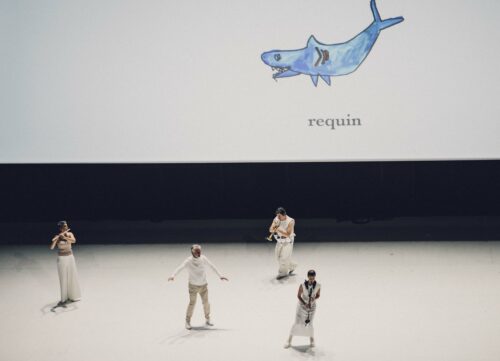
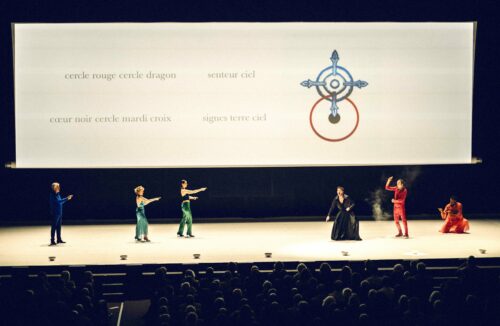
After the first two spectacular scenes - in which choir and orchestra follow one another, sounds circulate, angels mingle their voices and sing in tongues - scenes 3 and 4 are more intimate, akin to chamber music. The third scene(Licht-Bilder) sees Eve and Michael split up to form a quartet of three instruments (flute, basset-horn, trumpet) and a tenor voice. The man names the things and beings that inhabit the Earth, while the instruments around him twirl. This scene of prayer and praise is an incantatory rite in which the aim is not so much to enumerate as to bring together terrestrial entities, to awaken the souls of flowers, stones and volcanoes, to remind them of their divine vocation, to unite their disparate voices. The charm of the scene lies in this singular blend between the naivety of the intention and the formal complexity of the writing. There's something both childlike and learned about it, which the "mise en espace" failed to capture, despite the children's drawings projected onto the screen.
The fourth scene(Düfte-Zeichen) is one of synthesis, where each day is condensed into two motifs and one place. Two female singers and four male singers, all outstanding, detail seven emblems and seven regions of the world, while burning seven perfumes. All that might remain of Licht are the effluvia of these scents, fleeting and labile odors, permeable to one another, capable of resurrecting pieces of the world. Léa Trommenschlager's beautiful, powerful alto voice rings out: she is Eve-Marie. Everyone unites behind her. Michaël appears. He is a child with a crystalline voice (Aurélien Segarra). The duet that follows is one of the opera's most beautiful moments, all the more so for having been unforeseen. The union is vocal, but it is also somewhat mystical: incongruous and obvious.
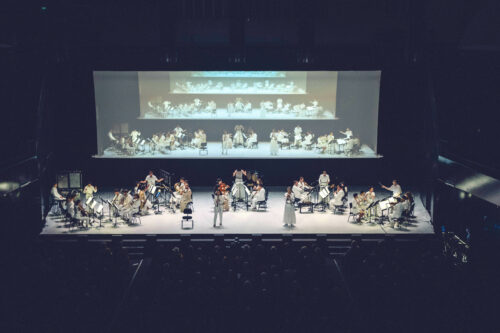

The fifth scene(Hoch-Zeiten) is the most spectacular in the opera, and the trickiest to stage. It is performed simultaneously in two distinct spaces: the Philharmonie's Grande Salle and the Cité de la Musique. Five instrumental groups on one side and five choirs on the other are both separate (led by five conductors on each side) and linked (on seven occasions, the music of one is heard in the space of the other). The scene is performed twice, so that spectators can experience both wings of the installation. On Monday November 20, image accompanied sound. Once again, the principle of redundancy. Wouldn't sound have been enough? Why was it also necessary to see? And see what? Musicians we've already seen (or will see). What we are denied is precisely to hear them without seeing them. The moment was lost when the auditory could be dissociated from the visual. Yet this in no way detracted from the musical power of the stage, superbly interpreted by the Maîtrise de Paris and students from the Conservatoire national supérieur de musique et de danse.
Despite these reservations, we must salute the work and dedication of Le Balcon ensemble, which, since 2018, has enabled us to enjoy these experiences that are as strange as they are necessary.
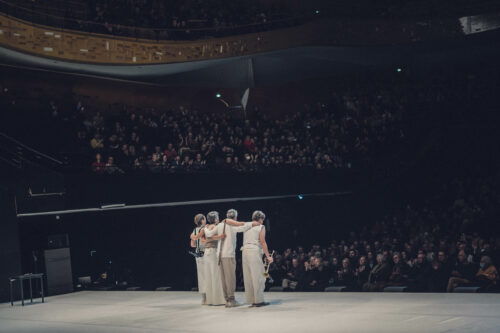
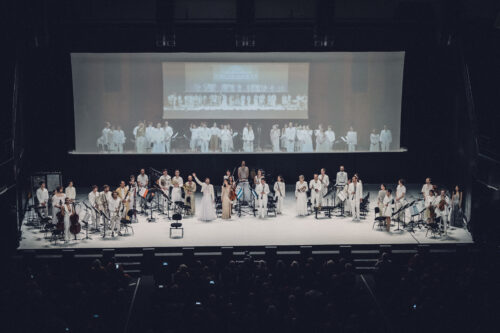
Lambert Dousson* and Bastien Gallet
*D. in philosophy, Lambert Dousson is Professor of Humanities at the École nationale supérieure d'art de Dijon and author of "... the greatest work of art for the entire cosmos...". Stockhausen et le 11 septembre, essai sur la musique et la violence(Editions MF, 2020).
Photos © Denis Allard



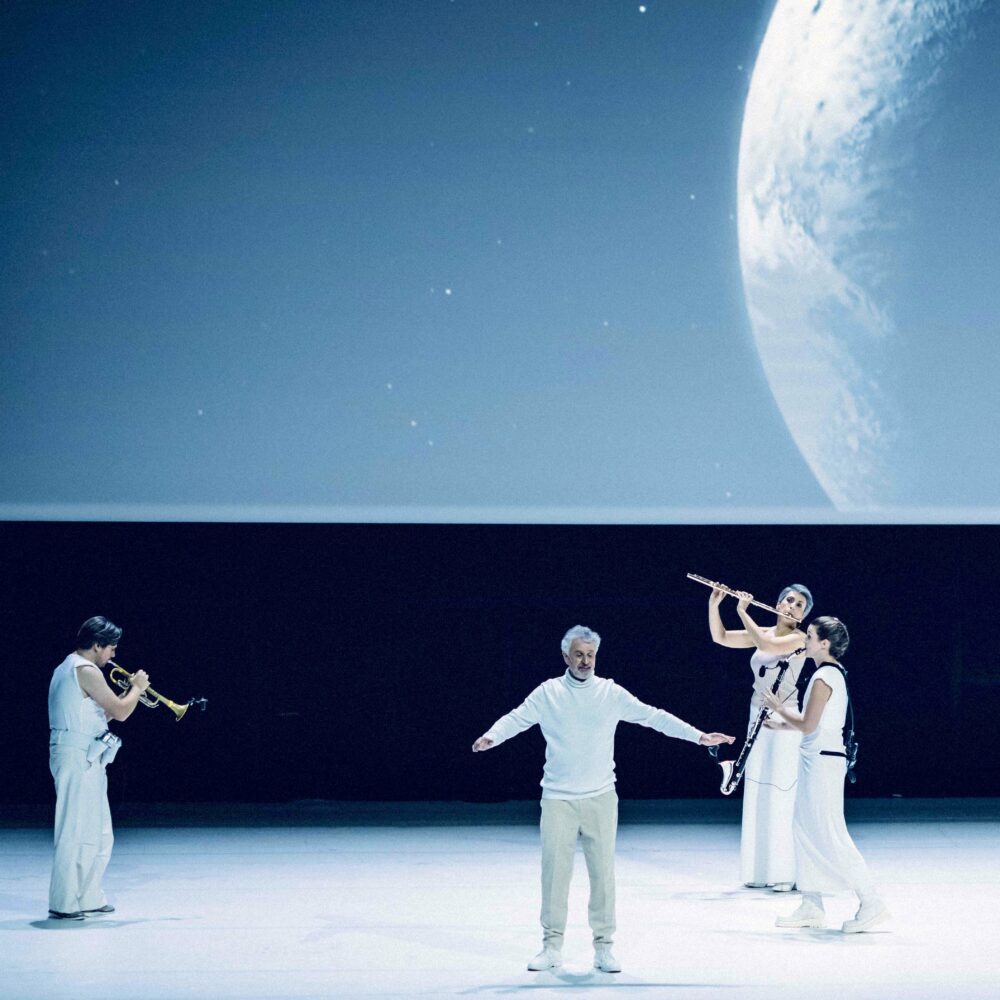)
